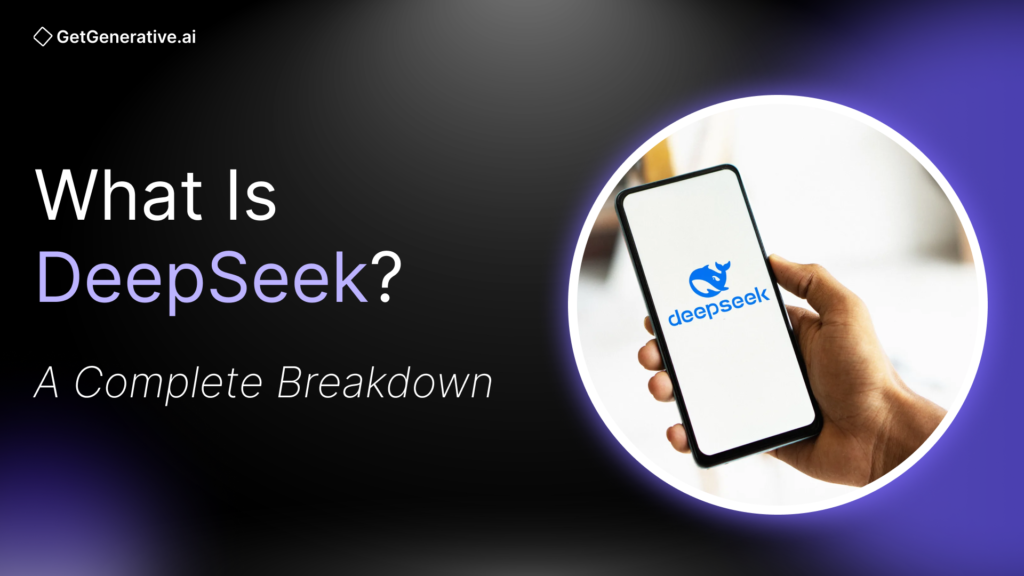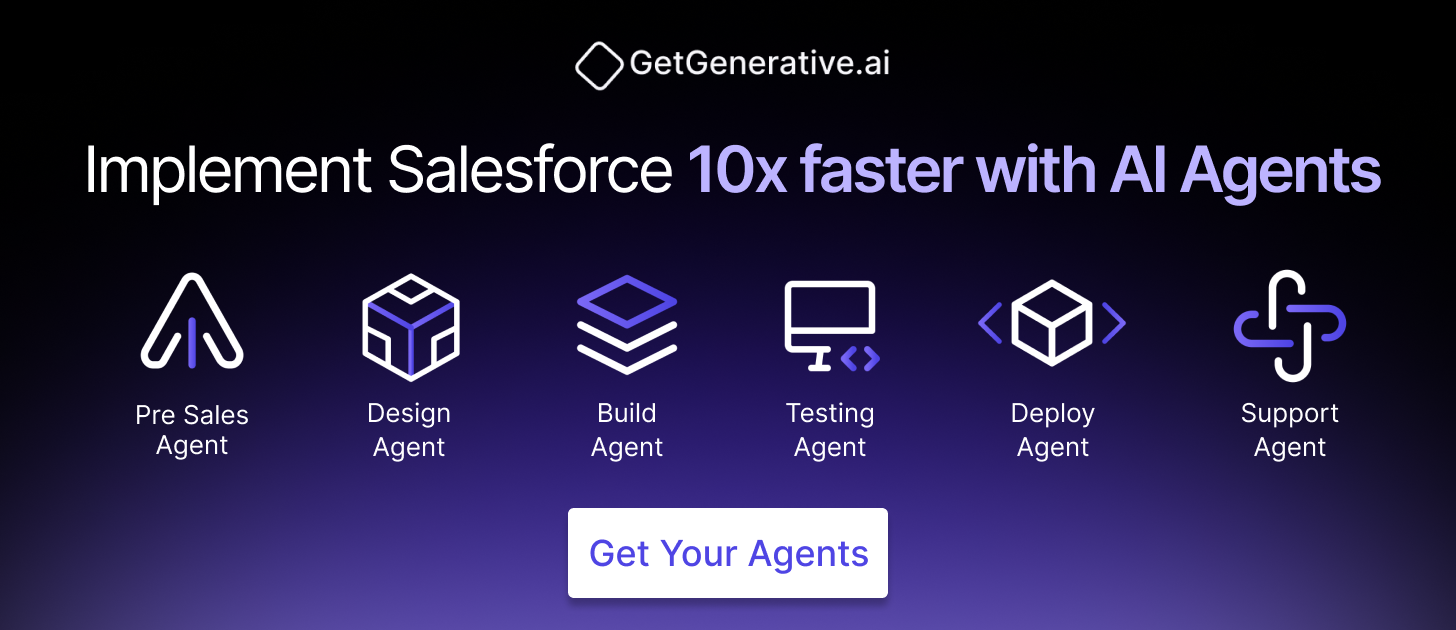What Is DeepSeek? A Complete Breakdown
DeepSeek has emerged as one of the most disruptive players in the AI industry, shaking up the dominance of established giants like OpenAI, Google, and Meta. Developed by a Chinese AI startup, DeepSeek has stunned the tech world with its highly efficient, cost-effective large language models (LLMs) that rival, and in some cases outperform, Western alternatives.
The release of DeepSeek-R1 in January 2025 triggered a massive reaction in both AI circles and global stock markets. Investors scrambled to reassess AI valuations as DeepSeek’s models, which cost a fraction of what its competitors spend, demonstrated remarkable capabilities.
Unlike traditional AI firms that operate on closed-source, high-cost models, DeepSeek follows a more open-source approach, providing developers and businesses access to cutting-edge AI without excessive price barriers. But what exactly is DeepSeek, and why is it making waves in the AI industry?
The Rise of DeepSeek
DeepSeek’s journey began in 2023 when Liang Wenfeng, a former hedge fund manager, founded the company in Hangzhou, China. Liang, who had co-founded the quantitative hedge fund High-Flyer, pivoted his focus toward artificial intelligence, seeking to develop advanced reasoning models that could compete with the best AI systems in the world.
Despite being a relatively new entrant in the AI race, DeepSeek’s rapid innovation and cost-efficient training techniques have allowed it to stand out. While leading AI firms like OpenAI and Google have spent billions developing their flagship models, DeepSeek-R1 was reportedly trained for less than $6 million, a staggering difference that has raised eyebrows across the industry.
Source: Statista
Key Innovations Behind DeepSeek’s AI Models
DeepSeek’s approach to AI development differs significantly from that of its Western competitors. The company has pioneered new training methodologies that reduce computational costs while enhancing reasoning capabilities.
Reinforcement Learning for Advanced Reasoning
DeepSeek employs reinforcement learning techniques that allow its models to improve over time through iterative feedback. Instead of relying solely on massive datasets and supervised fine-tuning, DeepSeek-R1 enhances its performance through trial and error, gradually refining its ability to reason and generate human-like responses.
Efficient Model Training with Limited Resources
One of the most astonishing aspects of DeepSeek is its ability to train high-performance models using older and less powerful AI chips. Despite U.S. restrictions on exporting cutting-edge AI hardware to China, DeepSeek has managed to create state-of-the-art models using more accessible computing resources, challenging the notion that high-end GPUs are necessary for leading AI development.
Mixture-of-Experts (MoE) Architecture
DeepSeek-V3 and DeepSeek-R1 utilize a Mixture-of-Experts (MoE) architecture, which optimizes efficiency by selectively activating only portions of the model for each query. Instead of processing every input with the full weight of the AI’s parameters, MoE ensures that only the most relevant parts of the model are engaged. This drastically reduces computational costs while maintaining high accuracy and performance.
Reward Engineering for Better AI Alignment
DeepSeek has introduced a rule-based reward system, refining the way AI models learn from feedback. Unlike traditional neural reward models, which rely on vast amounts of labeled data, DeepSeek’s system focuses on logical consistency, helping the AI produce more reliable and coherent responses.
“DeepSeek R1 is one of the most amazing and impressive breakthroughs I’ve ever seen—and as open source, a profound gift to the world.”
– Marc Andreessen, Co-founder of Andreessen Horowitz
Comparison: DeepSeek vs. OpenAI and Other AI Models
DeepSeek’s rapid ascent has put it in direct competition with OpenAI’s ChatGPT, Google’s Gemini, and Meta’s Llama. Here’s how DeepSeek stacks up against the competition:
| Feature | DeepSeek | OpenAI (ChatGPT) | Google Gemini | Meta (Llama) |
| Founding Year | 2023 | 2015 | 2023 | 2023 |
| Model Type | Open-source LLMs | Proprietary LLMs | Proprietary LLMs | Open-source LLMs |
| Cost of Training | <$6 million (DeepSeek-R1) | Estimated $100M+ (GPT-4o) | High (Undisclosed) | High (Undisclosed) |
| API Pricing (per million tokens) | $0.55 (input), $2.19 (output) | $15 (input), $60 (output) | Not disclosed | Free for research use |
| Architecture | Mixture-of-Experts | Transformer-based | Transformer-based | Transformer-based |
| Reasoning Ability | Strong, optimized for efficiency | Advanced but high-cost | Advanced | Balanced performance |
DeepSeek’s biggest advantage lies in its cost-to-performance ratio, as it delivers comparable or superior results at a fraction of the price of its competitors. This affordability has made DeepSeek particularly attractive to businesses, developers, and AI researchers.
Related Read – DeepSeek vs ChatGPT: Comparing Cost, Performance, and Accuracy
DeepSeek’s Major AI Models
DeepSeek has released several AI models, each designed for specific use cases:
DeepSeek Coder (November 2023)
A model specialized for coding tasks, DeepSeek Coder was the first AI system released by the company. It offers robust programming assistance, supporting multiple languages and helping developers write, debug, and optimize code more efficiently.
DeepSeek LLM (December 2023)
This was DeepSeek’s first general-purpose language model, providing foundational AI capabilities for chatbots, content generation, and automation.
DeepSeek-V2 (May 2024)
An upgraded version of its general LLM, DeepSeek-V2 improved both reasoning ability and efficiency, making it a strong alternative to OpenAI’s GPT models.
DeepSeek-Coder-V2 (July 2024)
A highly advanced coding assistant featuring 236 billion parameters and a 128,000-token context window, making it one of the most capable AI models for complex programming tasks.
DeepSeek-V3 (December 2024)
A cutting-edge AI model featuring 671 billion parameters and an efficient MoE architecture, DeepSeek-V3 became the backbone for later models, including DeepSeek-R1.
DeepSeek-R1 (January 2025)
DeepSeek’s most advanced reasoning model, built upon DeepSeek-V3, aimed at competing with OpenAI’s o1 model. It delivers powerful logical reasoning at a significantly lower computational cost.
Janus-Pro-7B (January 2025)
A vision model designed for image analysis and generation, Janus-Pro-7B showcases DeepSeek’s capabilities beyond text-based AI, positioning the company as a competitor in the multimodal AI space.
Why DeepSeek Is Disrupting the AI Industry
DeepSeek’s rapid rise has not gone unnoticed by the global AI market. The company’s ability to achieve state-of-the-art AI performance at a fraction of the cost has raised concerns among Western tech giants, leading to significant market reactions.
Stock Market Impact
When DeepSeek-R1 launched in January 2025, the Nasdaq Composite dropped by 3.4%, and major AI-focused companies such as Nvidia, Microsoft, and Meta experienced steep stock declines. Investors feared that DeepSeek’s cost-effective AI could undermine the premium pricing models that Western firms rely on.
Geopolitical Implications
DeepSeek’s advancements have also ignited discussions about China’s position in the global AI race. Despite restrictions on high-end AI chips, DeepSeek has demonstrated that China can still develop leading AI technologies. This has raised concerns among U.S. policymakers about technological dominance and national security.
The Open-Source Debate
Unlike OpenAI’s increasingly closed approach, DeepSeek maintains an open-source philosophy, allowing global researchers to build upon its models. While this fosters innovation, it also raises ethical and security concerns about how AI technologies are shared and controlled.
Security Concerns Surrounding DeepSeek
Despite its rapid success, DeepSeek has faced significant scrutiny regarding security, data privacy, and geopolitical implications. As an AI model developed in China, concerns have been raised about how the data processed by DeepSeek is stored, accessed, and potentially monitored.
Data Privacy and Surveillance Risks
One of the biggest concerns about DeepSeek is that all user data is stored in China, raising alarms about potential government oversight. Critics worry that personal and corporate data processed through DeepSeek models could be accessible to Chinese authorities, creating major cybersecurity and privacy risks for businesses and individuals outside China.
This concern has led several governments and organizations to ban the use of DeepSeek within their institutions, citing national security and data protection concerns.
DeepSeek Bans Across the World
Due to its data policies and geopolitical tensions, DeepSeek has been banned or restricted in multiple regions and industries.
Organizations and Governments That Have Banned DeepSeek
- United States: U.S. Congress, U.S. Navy, Pentagon, and Texas state government
- Europe: Italy has banned DeepSeek over privacy concerns
- Australia: Government agencies have prohibited DeepSeek usage
- Taiwan and South Korea: Various government agencies have restricted access
- NASA: Due to security concerns regarding proprietary research data
These bans have hindered DeepSeek’s expansion into Western markets, but its open-source nature means that developers in these regions can still access and modify its models independently.
DeepSeek’s Cybersecurity Challenges
As DeepSeek’s popularity surged, it also became a prime target for cyberattacks.
Major Cyberattack on DeepSeek (January 2025)
On January 27, 2025, DeepSeek was hit by a large-scale cyberattack that temporarily disrupted its services. The attack occurred shortly after its AI assistant overtook ChatGPT as the most downloaded app on Apple’s App Store.
Details of the Attack
- New user registrations were temporarily halted to prevent further breaches
- The attack overloaded DeepSeek’s web services and API, suggesting a DDoS (Distributed Denial-of-Service) attack
- DeepSeek deployed security patches and restored full functionality by January 28, 2025
While the attack was quickly mitigated, it highlighted the risks associated with AI platforms operating on a global scale.
DeepSeek Data Leak (January 29, 2025)
Just days after the cyberattack, Wiz Research, a cybersecurity firm, uncovered a massive data exposure within DeepSeek’s backend systems.
What Was Leaked?
- User chat history and sensitive logs
- API keys and authentication credentials
- Operational details about DeepSeek’s infrastructure
This “rookie” cybersecurity mistake sparked further concerns about DeepSeek’s ability to protect user data, reinforcing arguments against its use in sensitive environments.
“To people who see the performance of DeepSeek and think: ‘China is surpassing the US in AI.’ You are reading this wrong. The correct reading is: ‘Open source models are surpassing proprietary ones.”
– Yann LeCun, Vice President & Chief AI Scientist at Meta:
Why DeepSeek’s AI Efficiency is a Game-Changer
Despite security concerns, DeepSeek’s AI efficiency is a major breakthrough that could reshape the industry’s future.
DeepSeek’s Low-Cost Model vs. High AI Development Costs
One of the biggest revelations from DeepSeek’s rise is how much less it costs to develop high-performing AI.
AI Training Costs Comparison
- DeepSeek-R1: Trained for less than $6 million
- OpenAI’s GPT-4o: Estimated to have cost over $100 million
- Google Gemini: High-cost but undisclosed training expenses
This raises a crucial question: Have Western AI companies been overspending on model development?
How DeepSeek Achieved Cost-Effective AI
DeepSeek’s efficiency is primarily due to:
- Mixture-of-Experts (MoE) architecture – Activates only the necessary parts of the model, reducing energy use
- Reinforcement learning – Allows AI to improve without excessive retraining
- Optimized training methods – Uses older AI chips instead of expensive high-end GPUs
By proving that advanced AI can be trained at a fraction of the usual cost, DeepSeek has forced tech companies and investors to rethink AI funding strategies.
The Future of DeepSeek and AI Industry Shifts
DeepSeek’s impact is far from over. The AI industry is now facing a period of rapid change, with open-source AI models becoming more competitive.
Will Open-Source AI Take Over?
DeepSeek follows an open-source model, allowing developers worldwide to access, modify, and improve its AI. This contrasts with OpenAI’s recent shift towards more closed, monetized AI solutions.
If DeepSeek continues on this path, AI innovation may move away from corporate-controlled models and become more decentralized.
Potential U.S. and Global Responses to DeepSeek
Given DeepSeek’s success, Western AI firms and governments may take countermeasures, such as:
- Increased AI investments – Companies like OpenAI, Google, and Meta may accelerate AI research to maintain dominance
- Stronger AI export controls – The U.S. may tighten restrictions on AI chip exports even further
- Development of open-source AI alternatives – Companies may adopt a more transparent approach to counter DeepSeek’s popularity
The AI industry is entering a new phase, where cost-effective AI models like DeepSeek could fundamentally change how AI is developed and used globally.
Conclusion: Is DeepSeek the Future of AI?
DeepSeek has undeniably disrupted the AI industry with its cost-efficient, high-performing models. It has proven that AI development doesn’t have to be expensive and that open-source approaches can rival closed-source powerhouses like OpenAI and Google.
Revolutionize your Salesforce implementation lifecycle with GetGenerative.ai – the AI-powered workspace and agents designed to streamline every stage, from Pre-Sales to Go-Live. Experience seamless project management and enhanced efficiency like never before.
FAQs
1. What makes DeepSeek different from OpenAI’s ChatGPT?
DeepSeek is more cost-efficient, open-source, and optimized for reasoning tasks, whereas OpenAI follows a proprietary, high-cost model. DeepSeek’s training costs are significantly lower, making it a competitive alternative.
2. Why is DeepSeek banned in several countries?
Concerns about data privacy, government oversight, and cybersecurity risks have led multiple governments, including the U.S. and Australia, to ban DeepSeek in official capacities.
3. How did DeepSeek develop its AI without high-end GPUs?
Despite U.S. export restrictions on advanced AI chips, DeepSeek trained its models using older, less powerful chips while optimizing its training techniques for efficiency.
4. Can businesses safely use DeepSeek models?
While DeepSeek’s AI models are highly capable, businesses should be cautious about data privacy risks. Running DeepSeek models on private servers or via vetted platforms may be a safer alternative.
5. Will DeepSeek overtake OpenAI in the AI race?
While DeepSeek has gained rapid momentum, OpenAI and other Western firms still hold an edge in enterprise adoption and funding. However, DeepSeek’s innovations are reshaping the AI industry, making it a major contender for the future.




